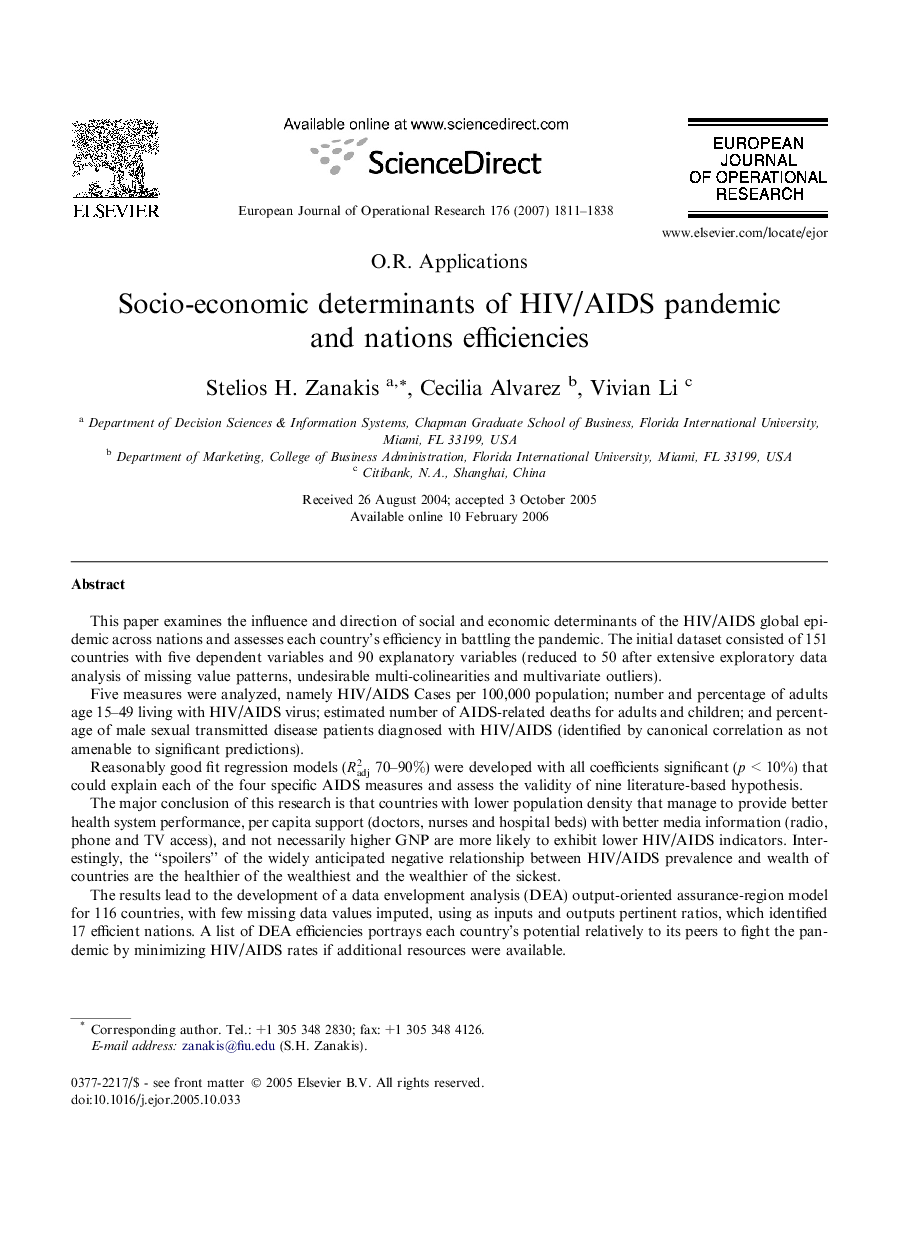| Article ID | Journal | Published Year | Pages | File Type |
|---|---|---|---|---|
| 479296 | European Journal of Operational Research | 2007 | 28 Pages |
This paper examines the influence and direction of social and economic determinants of the HIV/AIDS global epidemic across nations and assesses each country’s efficiency in battling the pandemic. The initial dataset consisted of 151 countries with five dependent variables and 90 explanatory variables (reduced to 50 after extensive exploratory data analysis of missing value patterns, undesirable multi-colinearities and multivariate outliers).Five measures were analyzed, namely HIV/AIDS Cases per 100,000 population; number and percentage of adults age 15–49 living with HIV/AIDS virus; estimated number of AIDS-related deaths for adults and children; and percentage of male sexual transmitted disease patients diagnosed with HIV/AIDS (identified by canonical correlation as not amenable to significant predictions).Reasonably good fit regression models (Radj270–90%) were developed with all coefficients significant (p < 10%) that could explain each of the four specific AIDS measures and assess the validity of nine literature-based hypothesis.The major conclusion of this research is that countries with lower population density that manage to provide better health system performance, per capita support (doctors, nurses and hospital beds) with better media information (radio, phone and TV access), and not necessarily higher GNP are more likely to exhibit lower HIV/AIDS indicators. Interestingly, the “spoilers” of the widely anticipated negative relationship between HIV/AIDS prevalence and wealth of countries are the healthier of the wealthiest and the wealthier of the sickest.The results lead to the development of a data envelopment analysis (DEA) output-oriented assurance-region model for 116 countries, with few missing data values imputed, using as inputs and outputs pertinent ratios, which identified 17 efficient nations. A list of DEA efficiencies portrays each country’s potential relatively to its peers to fight the pandemic by minimizing HIV/AIDS rates if additional resources were available.These findings should be useful to health policy makers and researchers of multi-country studies on determinants of the AIDS pandemic and global efficient strategies for combating it.
